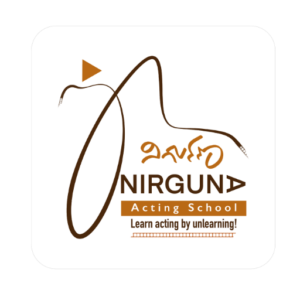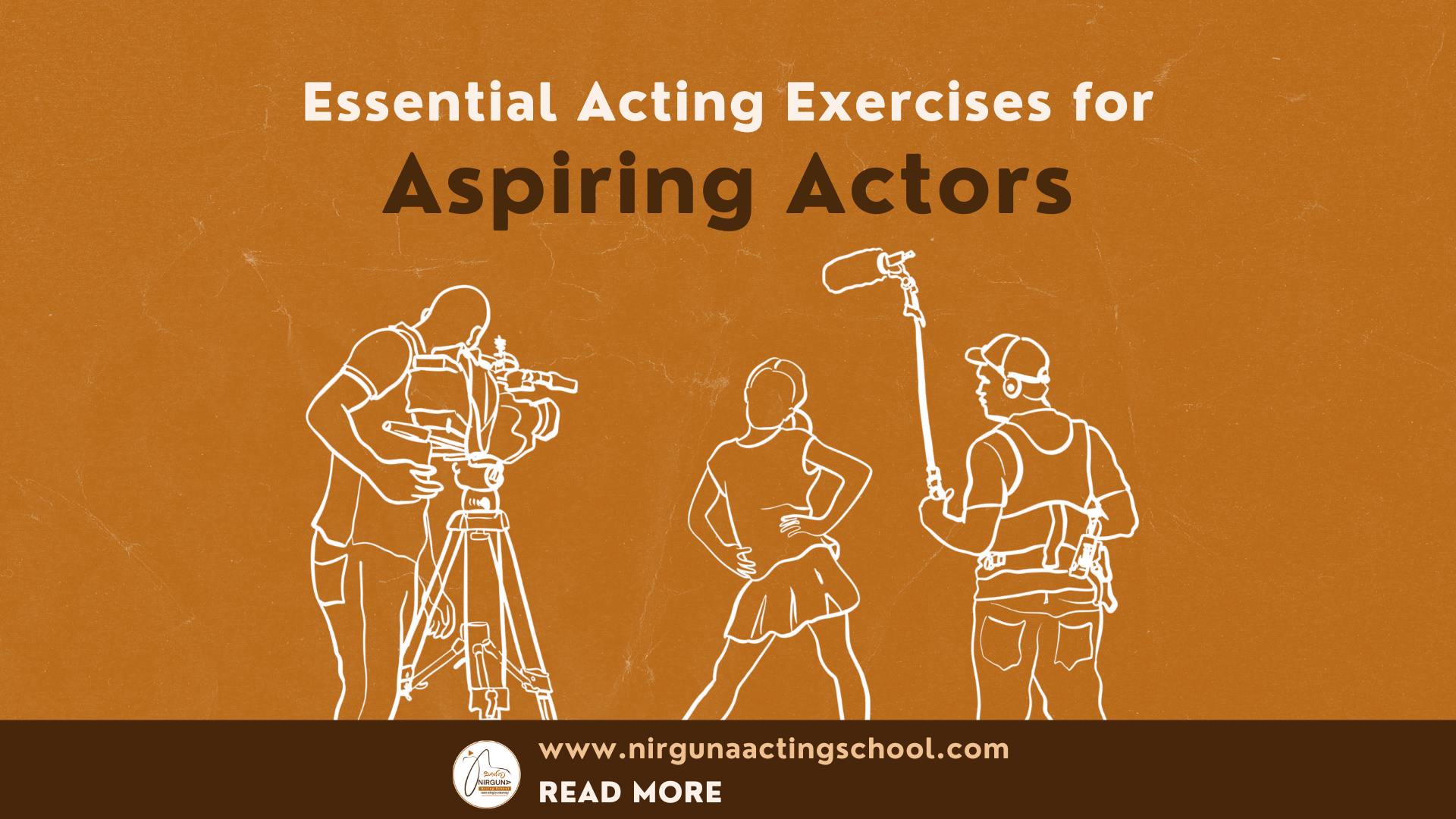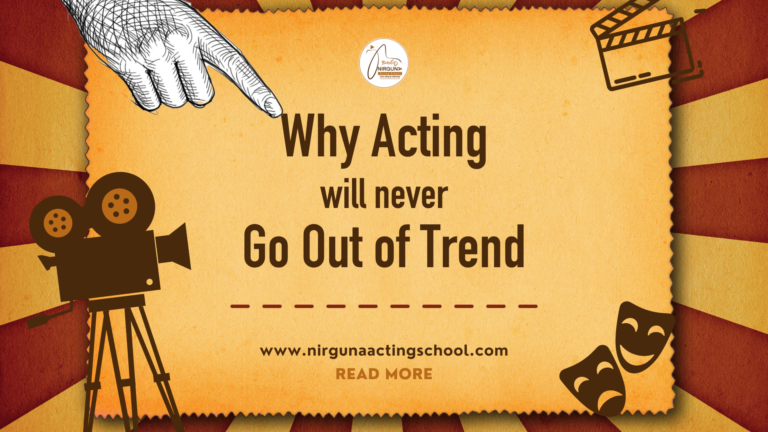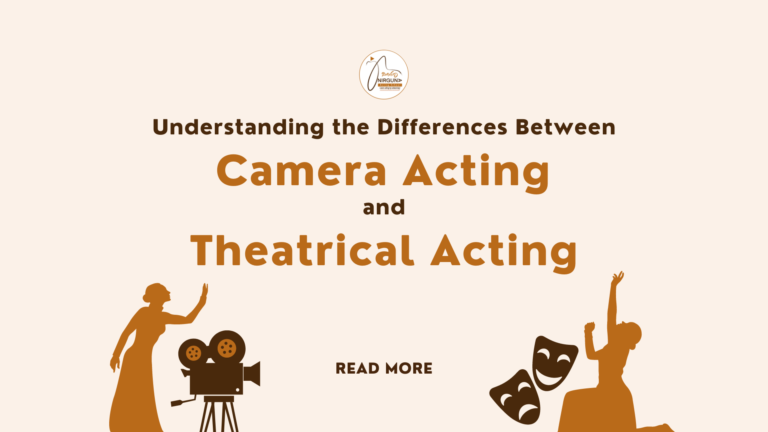Acting exercises are crucial for developing skills, enhancing creativity, and maintaining flexibility in performances. Here are some essential acting exercises that can help actors of all levels:
1. Warm-Up Exercises
– Physical Warm-Up: Engage in activities like stretching, light jogging, or yoga to relax the body and prepare it for performance.
– Vocal Warm-Up: Perform vocal exercises such as humming, tongue twisters, and pitch variations to loosen the vocal cords and improve clarity and projection.
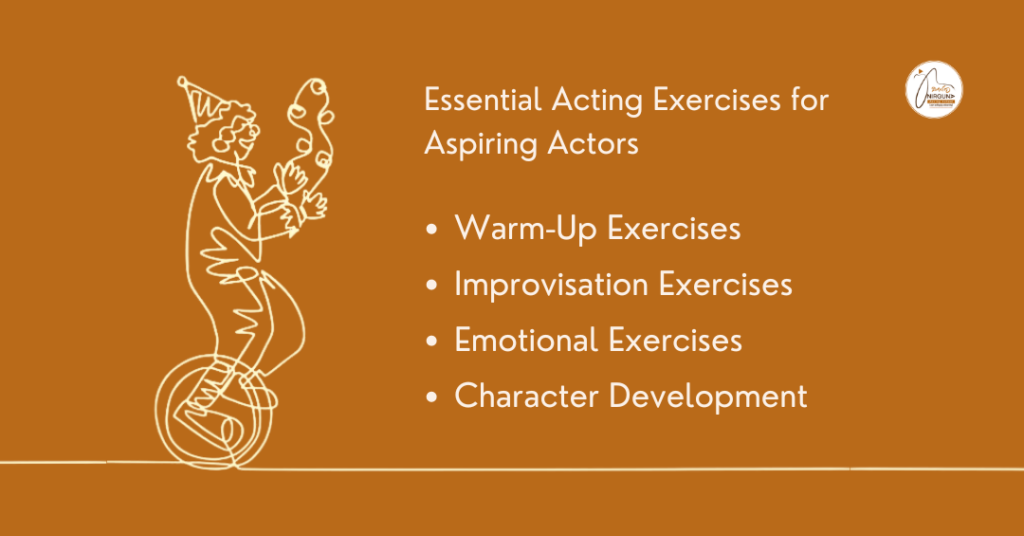
2. Improvisation Exercises
– Yes, And: Partners build a scene by accepting each other’s statements and adding new information. This fosters creativity and adaptability.
– Props Improv: Use a random prop and create a scene around it, encouraging spontaneity and imagination.
– Character Walks: Walk around the room embodying different characters, focusing on how they move, their posture, and their energy.
3. Emotional Exercises
– Emotional Recall: Recall a personal memory to evoke genuine emotions that can be applied to a scene. This helps in accessing and controlling emotions on cue.
– Emotional Substitution: Substitute an event in your life with a similar situation in the script to bring authentic emotions to your performance.
4. Script Analysis and Memorization
– Script Breakdown: Analyze the script to understand the character’s objectives, motivations, and relationships. Identify beats and subtext within the lines.
– Line Memorization: Use techniques like repetition, recording, listening, or writing outlines to help memorize the script effectively.
5. Character Development
– Character Biography: Write a detailed biography of your character, including their backstory, personality traits, and relationships. This helps in creating a well-rounded and believable character.
– Hot Seating: Sit in the ‘hot seat’ as your character and answer questions posed by others. This deepens your understanding of the character’s motivations and behaviour.
6. Voice and Diction Exercises
– Breathing Techniques: Practise diaphragmatic breathing to control your breath and support your voice.
– Tongue Twisters: Use tongue twisters to improve diction and clarity.
– Pitch and Tone Variation: Experiment with different pitches and tones to enhance vocal versatility.
7. Physicality and Movement
– Mirror Exercise: Work with a partner, mirroring each other’s movements. This builds awareness and coordination.
– Laban Movement Analysis: Explore different movement qualities (weight, space, time, and flow) to enhance physical expressiveness.
– Neutral Mask: Wear a neutral mask to focus on body language and movement without relying on facial expressions.
8. Scene Study
– Partner Scenes: Work with a partner to rehearse and perform scenes. Focus on listening, reacting, and maintaining the flow of the scene.
– Objective and Tactics: Identify your character’s objectives in the scene and experiment with different tactics to achieve them.
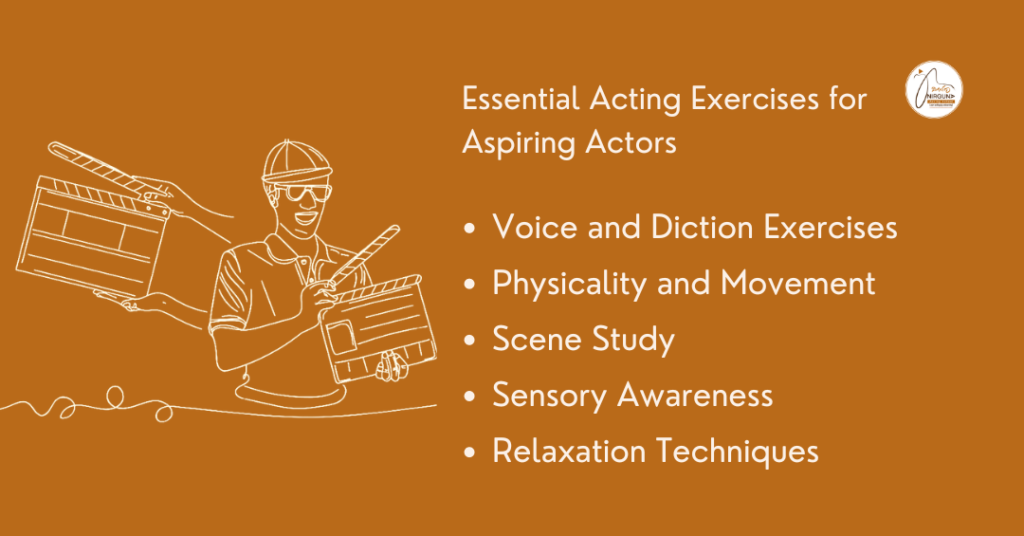
9. Sensory Awareness
– Sense Memory: Engage your senses by recalling and reliving sensory experiences (taste, smell, touch, sound, sight) to bring vividness to your performance.
– Environment Exploration: Imagine and physically explore your character’s environment to ground yourself in the scene’s reality.
10. Relaxation Techniques
– Progressive Muscle Relaxation: Tense and then relax different muscle groups to release physical tension.
– Visualization: Use guided imagery to visualize a calm and focused state, helping to reduce anxiety and enhance concentration.
Conclusion
Regular practice of these acting exercises can significantly enhance an actor’s skills, confidence, and versatility. Whether you’re a beginner or a seasoned professional, incorporating these exercises into your routine can help you deliver more authentic, dynamic, and compelling performances.
